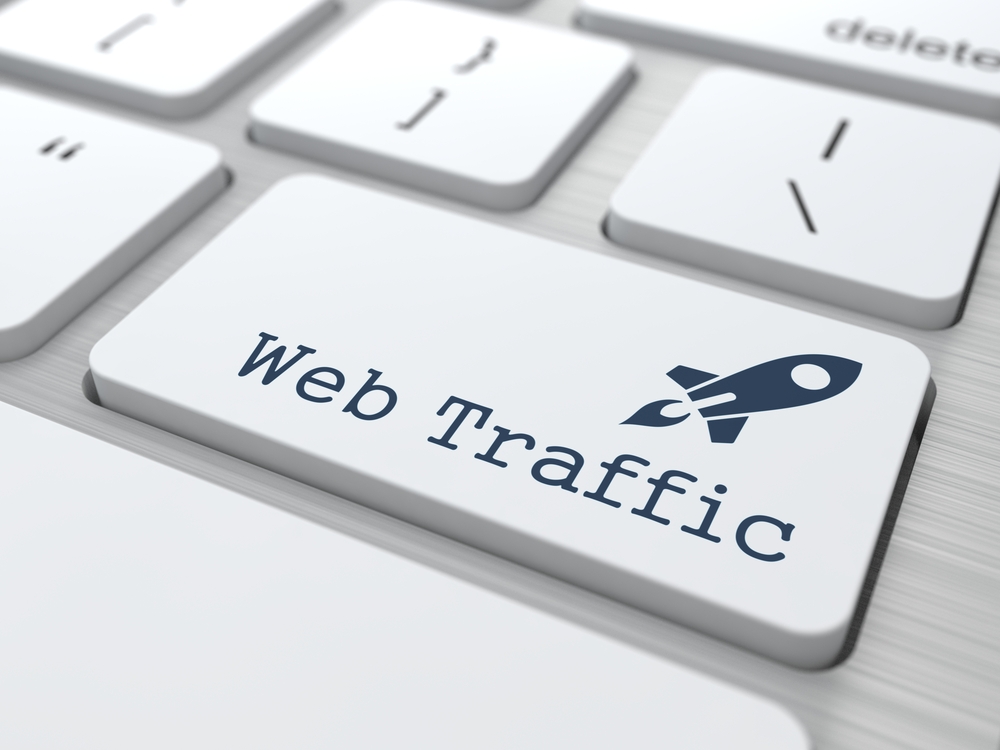
Retargeting is a powerful marketing technique that allows you to reach out to potential customers who have already shown interest in your products or services. It displays relevant ads across different platforms and channels, reminding them of your brand and value proposition.
However, retargeting is not just for the B2C market. It can be even more effective for B2B businesses, as they typically have longer and more complex sales cycles, multiple decision-makers, and higher-value deals.
This guide will explain what B2B retargeting is, why it’s essential, and how to use it to boost conversion rates, brand awareness, and ROI. We’ll share some B2B retargeting best practices, tips, and case studies to help you create successful B2B retargeting campaigns.
Understanding B2B Retargeting
B2B retargeting is showing targeted ads to prospects who have visited your website, downloaded your content, filled out a form, or engaged with your brand in some other way but have yet to convert into customers.

Imagine a user who downloaded a case study from your site but didn’t contact sales. B2B retargeting ad examples could be an invitation to a personalized demo, directly addressing the solutions they showed interest in.
B2B retargeting differs from B2C in several ways. For instance, B2B retargeting:
- Focuses on the account level rather than the individual level. This means you need to target the person who visited your website and other key stakeholders and influencers within the same organization.
- Requires more personalization and segmentation, as B2B buyers have different needs, pain points, and preferences depending on their role, industry, and stage in the buyer’s journey.
- Has a longer time frame, as B2B buyers typically take more time to research, compare, and evaluate their options before making a purchase decision.

B2B retargeting plays a crucial role in the B2B buyer’s journey, as it helps you to:
- Stay top of mind and build trust with your prospects, as they are exposed to your brand and message multiple times.
- Educate and nurture your prospects by providing relevant and valuable content addressing their challenges and goals.
- Drive them to take action by creating a sense of urgency and offering incentives that motivate them to convert.
Key Benefits of B2B Retargeting
B2B retargeting can bring you many benefits, such as:
1. Increased conversion rates
Retargeted users are 8 times cheaper to reach per click than non-retargeted users. This is because retargeting helps you reconnect with prospects who have already expressed interest in your solution and persuade them to take the next step in the sales funnel.
2. Enhanced brand awareness and recall
Retargeting is a powerful strategy to enhance brand exposure and recognition. When prospects encounter your ads across various platforms and channels, it reinforces your brand in their minds. As a result, when they are ready to make a purchase, they are more likely to recall and choose your brand.
3. Cost-effective marketing strategy
It can also help you optimize your marketing budget and ROI, as you can focus on the most qualified and engaged prospects rather than wasting money on reaching a broad and irrelevant audience. Retargeting can lower your cost per acquisition (CPA), as you can increase your conversions without increasing your ad spend.
4. Personalized engagement with prospects
Retargeting allows you to tailor your ads and content to your prospects' needs, interests, and behaviors. This can improve your relevance and credibility, as well as your customer satisfaction and loyalty.

Developing a Successful B2B Retargeting Strategy
To create effective B2B retargeting campaigns, you need to follow a clear and structured strategy. Here are some key steps to consider:
1. Identifying your target audience
The first step is to define who you want to retarget and why. You can use various criteria to segment your audience, such as
- Industry
- Company size
- Job title
- Location
- Website behavior
- Content consumption
- Lead score, etc.
You can also use tools like Google Analytics, LinkedIn Insights, and CRM software to collect and analyze data about your prospects.

2. Segmenting your retargeting campaigns
The next step is to create different retargeting campaigns for different segments of your audience based on their characteristics and stages in the buyer’s journey. For example, you can create separate campaigns for prospects who have visited your homepage, product page, pricing page, blog, landing page, etc.
You can also create campaigns for prospects who have abandoned a form, a cart, or a trial. The more specific and relevant your campaigns are, the more effective they will be.
3. Choosing the right platforms for B2B retargeting
The third step is to select the best B2B retargeting platform and channels for your campaigns, depending on your goals, budget, and audience. Some of the most popular platforms for B2B retargeting are:
LinkedIn is the largest and most trusted professional network, with over 740 million members. It allows you to retarget prospects who have visited your website, viewed your profile, or engaged with your content on LinkedIn.
You can also use LinkedIn’s rich targeting options, such as industry, company, job function, seniority, skills, etc., to reach your ideal audience. LinkedIn offers various ad formats, such as sponsored content, sponsored messaging, text ads, video ads, etc.
Google Ads
Google Ads is a widely used online advertising platform, with over 3.5 billion daily searches. It allows you to retarget prospects who have visited your website, app, or YouTube channel or searched for keywords related to your business on Google.
You can also expand your reach using Google’s audience network, which covers over 2 million websites and apps. Google Ads offers various ad formats, such as display, search, video, etc.
Facebook is the most popular social media platform, with over 2.8 billion monthly active users. It allows you to retarget prospects who have visited your website, app, or Facebook page or engaged with your content on Facebook or Instagram.
Meta Ads by Facebook provides custom audiences, lookalike audiences, and interest-based targeting to reach your ideal audience. It offers various ad formats, such as carousel ads, video ads, lead ads, etc.

For companies looking to improve lead generation, a B2B retargeting platform can be a game-changer, allowing for personalized ad campaigns that resonate with the target audience’s needs and interests.
4. Crafting compelling ad content
The fourth step is to create engaging and persuasive ad content for your retargeting campaigns based on your audience segment, platform, and goal. Some tips to consider are to use
- Clear and catchy headlines that capture your prospects’ attention and curiosity.
- Relevant, high-quality images or videos showcasing your brand and value proposition.
- Concise and compelling copy highlighting your benefits, features, and differentiators.
- Clear and strong calls to action (CTAs) that encourage your prospects to click on your ads and take the desired action.
- Social proof, such as testimonials, reviews, ratings, case studies, etc., to build trust and credibility.
- Urgency, scarcity, or exclusivity, such as limited-time offers, discounts, free trials, etc., to create a sense of FOMO (fear of missing out) and motivate your prospects to act fast.
B2B Retargeting Best Practices
To maximize the effectiveness of B2B retargeting, it's crucial to follow the essential steps that enhance your ads and align with customer expectations. Optimizing your B2B retargeting campaigns involves implementing certain best practices, including:
1. Frequency capping to avoid ad fatigue
Frequency capping limits the number of times your ads are shown to the same prospect within a given period. This can help you avoid annoying your prospects and wasting your ad budget.
The optimal frequency cap depends on your industry, product, and audience, but a general rule of thumb is to show your ads no more than 3 to 5 times per week per prospect.
2. Utilizing lead scoring to prioritize retargeting efforts
Lead scoring assigns a numerical value to each prospect based on their level of interest and readiness to buy. Doing so lets you effectively prioritize your retargeting efforts, concentrating on prospects with the highest scores and the greatest likelihood of converting.

You can also use lead scoring to tailor your retargeting campaigns. For example, you can provide different offers and incentives to prospects with different scores.
3. A/B testing for optimizing ad performance
A/B testing compares two or more ad versions to see which performs better. This can help you optimize your ad performance, as you can identify and improve the elements that affect your click-through rates (CTRs), conversion rates, and ROI. You can test various aspects of your ads, such as headlines, images, copy, CTAs, colors, etc.
4. Privacy considerations and compliance
Privacy is a significant concern for B2B buyers, mainly due to the General Data Protection Regulation (GDPR) and the California Consumer Privacy Act (CCPA). These regulations aim to protect consumers' personal data and privacy rights and impose strict rules and penalties for businesses that collect, process, and use such data.
Therefore, you need to ensure that your retargeting campaigns comply with these regulations, as well as with the policies and preferences of your prospects. Some steps to consider are:
- Obtaining explicit and informed consent from your prospects before collecting and using their data for retargeting purposes.
- Providing clear and transparent information about how and why you use their data and how they can opt-out or request deletion of their data.
- Respecting the privacy preferences of your prospects and allowing them to opt-out or unsubscribe from your retargeting campaigns at any time.
Tips for Maximizing Retargeting ROI
You need to integrate your retargeting campaigns with your overall marketing strategy and leverage analytics and personalization techniques to get the most out of your retargeting campaigns. Here are some tips to consider:
Integrating retargeting with overall marketing strategy
It's essential to align your retargeting goals and messages with your other marketing channels and activities, such as email, social media, content, webinars, etc. This can help you create a consistent and seamless customer experience and reinforce your brand identity and value proposition.
Leveraging analytics for data-driven decisions
Analytics is essential for measuring and improving your retargeting performance and ROI. You need to track and analyze various metrics, such as impressions, clicks, conversions, cost per click (CPC), cost per lead (CPL), cost per acquisition (CPA), return on ad spend (ROAS), etc.
Use tools like Google Analytics, LinkedIn Campaign Manager, Facebook Pixel, etc., to monitor and optimize your retargeting campaigns.

Personalization techniques for higher engagement
Personalization is the key to increasing your engagement and conversion rates with your prospects. Use various techniques to customize your ads and content to your prospect's needs, interests, and behaviors. Consider employing the following methods:
- Dynamic content: Dynamic content is the process of changing the content of your ads or landing pages based on the attributes or actions of your prospects. For example, you can show different headlines, images, copy, or CTAs to prospects from various industries, locations, or stages in the buyer's journey.
- Cross-device retargeting: Cross-device retargeting shows your ads to your prospects across different devices, such as desktop, mobile, tablet, etc. This can help you reach your prospects wherever they are and provide a consistent and smooth customer journey.
- Omnichannel retargeting: Omnichannel retargeting involves displaying your ads to potential customers across various platforms and channels, including the web, social media, email, and more. This approach can enhance brand exposure and recall while offering a unified and integrated customer experience.
Common Challenges and Solutions
The retargeting software market is projected to hit $8.87 billion in 2029, as it’s still a very effective way of reaching potential clients.

But retargeting comes with challenges, and you need to be aware of them and how to overcome them. Read on to learn some common challenges and solutions.
Overcoming ad blindness
Ad blindness is the phenomenon of users ignoring or blocking online ads, either consciously or unconsciously. This can reduce the effectiveness and reach of your retargeting campaigns. To overcome ad blindness, you need to use:
- Eye-catching and relevant images or videos that stand out from the background and capture your prospects’ attention.
- Clear and catchy headlines that spark your prospects’ curiosity and interest.
- Varied and fresh ad content and creative that avoid repetition and boredom.
- Different ad formats and sizes that fit the context and layout of the platform or channel.

Addressing privacy and data protection concerns
Privacy, and data protection are major concerns for B2B buyers, especially in the wake of the GDPR and the CCPA. These regulations aim to protect consumers' personal data and privacy rights and impose strict rules and penalties for businesses that collect, process, and use such data. To address these concerns, you need to:
- Obtain explicit and informed consent from your prospects before collecting and using their data for retargeting purposes.
- Provide clear and transparent information about how and why you use their data and how they can opt-out or request deletion of their data.
- Respect the privacy preferences of your prospects and allow them to opt-out or unsubscribe from your retargeting campaigns at any time.
- Comply with the regulations and policies of the platforms and channels you use for retargeting, such as LinkedIn, Google Ads, Facebook, etc.
Navigating platform-specific limitations
Each platform and channel has its limitations and requirements for retargeting, such as audience size, ad format, content, placement, etc. These can affect the reach and performance of your retargeting campaigns. Consider taking the following steps:
- Research and understand the specifications and best practices of each platform and channel you use for retargeting, such as LinkedIn, Google Ads, Facebook, etc.
- Adapt and optimize your retargeting campaigns for each platform and channel, based on their specifications and best practices.
- Test and experiment with different platforms and channels and measure their results and ROI.
Case Study: Successful B2B Retargeting Campaign
To inspire you and show you the potential of B2B retargeting, here’s a real-world B2B retargeting ads example and key takeaways from it.
TOPdesk
TOPdesk, a company that provides service management solutions, implemented a full-funnel strategy on LinkedIn. Its retargeting approach utilized a mix of website, video, and Lead Gen Forms. This multi-stage strategy began with raising awareness and continued through conversion.

Key Takeaways from TOPdesk’s Campaign:
- Full-Funnel Strategy: By employing various retargeting tactics, TOPdesk could engage with professionals at every step of their journey, from initial awareness to the final conversion.
- Diverse Content: Using different content types, such as videos and Lead Gen Forms, helped address their target audience's varied interests and behaviors.
- Improved Metrics: The campaign saw a 20% increase in conversion rate and a 24% decrease in cost per conversion, indicating a more efficient use of the marketing budget and a higher return on investment.
Lesson learned: Use LinkedIn retargeting to reach and engage your prospects with relevant and valuable content, and use lead gen forms to simplify and streamline the lead generation process.
B2B Retargeting as a Key Strategy
B2B retargeting is a powerful and effective marketing technique that can help you increase your conversion rates, brand awareness, and ROI. Following this guide's steps, tips, and best practices, you can create successful B2B retargeting campaigns that reach and engage your prospects with relevant and valuable ads and content.
If you want to take your B2B marketing to the next level, consider adopting retargeting in your marketing strategy. Retargeting can increase your chances of converting your prospects into customers and grow your business.





